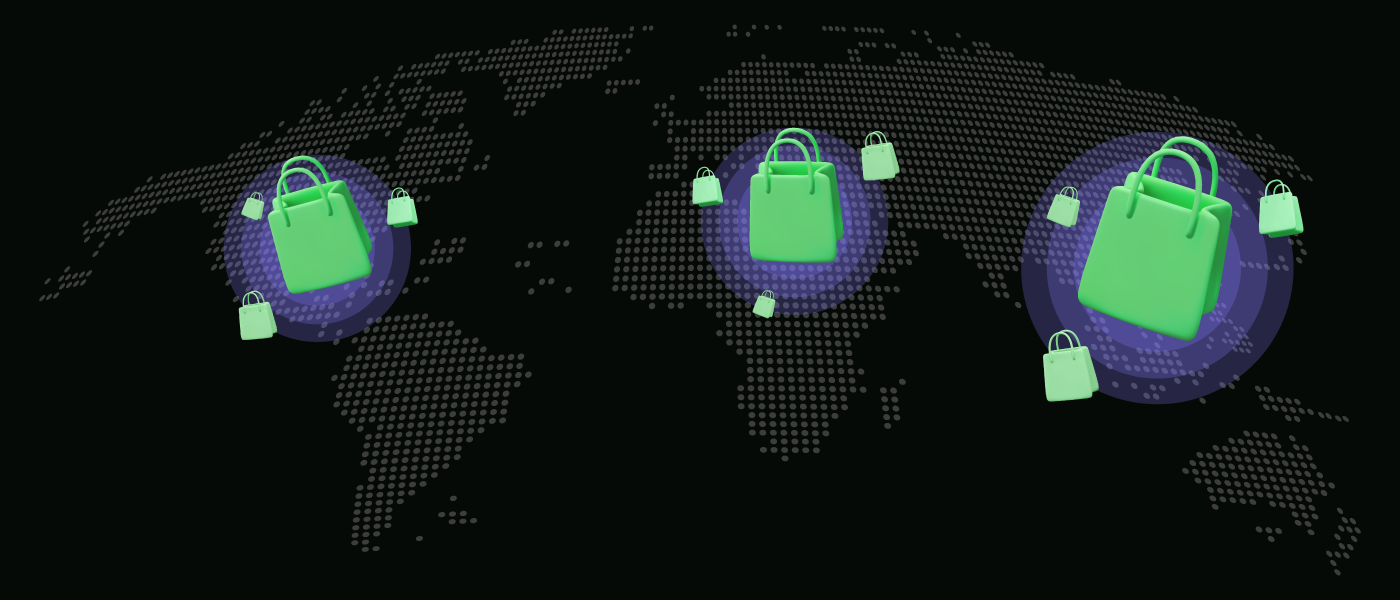Indeed, the world took a digital turn — even before the best of us could notice. Nowadays, gadgets abound in different forms for a wide array of purposes. The primary of these tech accessories are smartphones which, in itself, expands its capabilities with the help of other gadgets. Arguably, almost every need or purpose has a smart gadget counterpart — from appliances, cars, and even whole homes. Smart technology surrounds us so we can build a holistic lifestyle with all the latest tech accessories out there.
As we all know, as the demand arises, the market grows into a promising field for brands out there. In today’s interconnected world, we know that consumers from different regions will develop. For a business providing tech accessories, logistics is an important aspect of marketing, distributing, and sales fulfillment. Investing in logistics will provide a cutting edge in the competition.
Needless to say, a brand must be knowledgeable on global supply chain dynamics and customer order fulfillment. This article will provide you with what you need to know about tech accessories logistics. We’ll start with the current industry status and its particular nature. We’ll delve into trends, outlooks, and challenges. Lastly, we’ll discuss best practices that can respond to the promising potential of tech accessories logistics.
The New Normal
The COVID-19 pandemic took the world by surprise. The global consumer tech accessory market was no exception. It experienced a drawback across the regions when the pandemic strikes. According to Fortune Business Insights, the market took a -5.4% decline last 20201.
The social distancing policy caused sales declines due to physical stores closing. On the other hand, the work-from-home trend created a demand for electronic devices and tech accessories. Logistics took a direct-to-consumer (DTC) direction as e-commerce and home delivery became more necessary. To illustrate, LG Electronics sales increased between Q1 and Q2 for monitors (from 17% to 23%), laptops, and tablets (from 20% to 29%)2.
It has been quite a while now since the lockdown policies were eased. Things are gradually shifting toward the new normal. Retail stores have resumed near-normal operations. Nonetheless, the trends and approaches that were developed during the pandemic carried over. An example would be live-selling strategies which is a beloved format among Asians on social media platforms. From this context of recovery do we see the direction that growth in the tech accessory market will be heading.
Trends in the Electronic Market
The Internet of Things (IoT)
From the work-and-play-at-home paradigm, the pandemic made connectivity and convenience a top demand. As a consequence, electronic devices are now penetrating households. Homes are now becoming smart homes.
TV is now inseparable from the internet while other appliances and home gadgets are now catching up. Tech accessories as well as appliances address the demand for home connectivity, chore automation, and remote house management. In line with this demand trend is the consumer desire for convenience and user-friendliness. Bluetooth and wi-fi are the main features that buyers associate with these traits. Tech companies are outpacing each other through ingenious applications of features that promote accessibility to users.
The Internet of Things is the catchphrase taking buzz in tech accessory trends. Simply put, our usual household appliances and equipment are now connecting to the internet beyond our usual smartphones, tablets, and computers. For suppliers, it is expected that electronic and electromechanical components will see a rise in further demand. Once the practical applications of IoT become more applied, it will become a major demand driver. An example indication is the rise of Alexa and Siri voice service. Another is the integration of the SmartThings app that aims to create a unified smart home suited for one’s lifestyle.
Energy and Sustainability
In light of climate change and the turn to sustainable energy, tech accessories, and appliances are responding by becoming more energy efficient. There are international efforts between states in line with the rise of electronics and the need for a sustainable lifestyle. We have already seen in the market energy-efficient refrigerators and air conditioners that adjust to the weather. There is also smart home technology that does the same.
Moreover, internal components of these fresh techs are now shifting to a paradigm of less energy consumption as a means to save up on electricity utility bills. We can anticipate that demand for these will rise as people will choose energy-saving devices versus the ones that are not.
As a consequence, we should expect that on the manufacturing side, technologies for better production capacity will be the direction that manufacturers will take.
The Latest Tech
Logistics for tech accessories have to also take into account the fast-paced tech trends making the market volatile. These trends fall under categories comprising the latest in electronic technology. In a recent market forecast in Euromonitor International, market analysts Veronika Kandusova and Wee Teck Loo stated that Artificial Intelligence (AI), Cloud Storage Technology, and the Internet of Things (IoT) are the top three technologies that tech companies will be investing in for the next five years3.
The application of these technologies is diverse and may bring about improvement in different sectors. AI alone has a lot of applications. On the service-provider and tech accessory logistics side, it can aid in market analytics and demand prediction. Even in customer care and fixing technical issues, AI is a helping hand. For consumers, AI plays a crucial role in making smart assistants embedded in accessories such as headphones, speakers, and other electronic wearables.
The work-from-home setup has propelled the need for cloud technology. It rises according to the increasing need for digital connectivity, remote work, and e-commerce. Tech companies are now investing in different cloud service models like Platform as a Service (PaaS) and Software as a Service (SaaS).
Price Increase
The latest technology trends demand higher hardware capacity for tech accessories. This pushes the cost of production since companies would want their latest product to become capable of the change. This trend affects the retail prices on the end of consumers. Smartphones are competing for higher computing capacity through higher RAM and internal storage. Smart TV is shifting towards OLED and mini-LED backlit technologies. The shift to a 5G signal also pushes smartphones to adapt through better phone models with reliable 5G support.
There are also global factors that push the general average prices upwards. There’s a shortage of needed electronic parts and the rise of production costs due to inflation. There is also the current trend of sales stagnation. To increase margins and revenues, tech companies are pushing for mid-range and high-end models rather than entry-level variety — raising the value chain upwards along with retail prices.
The Market Outlook, 2023 and Beyond
2022 saw a boom in demand for tech accessories after the slowdown brought upon by the pandemic. 2023, on the other hand, saw a trend of slowing down growth and rebalancing inventories across different markets. What we are expecting is an uneven terrain in terms of market recovery from the pandemic. The difference lies in the segmentation along component types, industries, and geographical areas. Nonetheless, we can expect some loosening of supply chain bottlenecks and some easing of demands.
The supply chain is undergoing normalization since its high point in Q2 20224. From that, we can expect more normal fluctuations in demand. The main factor for the downward demand trend is the consumers and the areas related to it. On the other hand, the ones pulling the demand up are defense industries and semiconductor fabrication plants.
The Current Supply Chain Situation
Issues in the market and supply chain situation will remain for most of 2023. These issues revolve around factors like the unstable geopolitical situation, prolonged lead times, and increased labor and logistics costs.
The global market, being interconnected as it is, is subject to sudden changes that affect several points of connection across different supply chain nodes. In this period of inventory rebalancing and market corrections, there are bottlenecks and scarcities still. In Supplyframe’s forecast in Q3 of 2021 in its Commodity Intelligence Quarterly, we can expect shortages to end by 1Q of 2023 at the earliest5. The supply chain will normalize nonetheless. As the shortages become less acute, we can expect lower prices.
Uneven Recovery
Forecasting lead times is difficult given that the supply chain recovery is uneven. Nonetheless, it is something expected after a period of falling demand which was followed quickly by a sudden increase in the middle of inflation.
Despite the turbid outlook in the most recent forecast, there are positive things to look forward to in the next few years. Analysis from Fortune Business Insights projected that after the decline of market growth to -5.4% in 2020, it will grow from 689.45 billion USD in 2020 to 989.37 billion USD in 20276. That’s a CAGR of 5.3%. Overall, we have a positive outlook as we move past the pandemic years.
Challenges in Logistics for Tech Accessory
The nature of consumer electronics is a challenge when it comes to logistics for tech accessories. Finished products should be handled with care. Moreover, technology changes fast, from one model to the next. Consumer electronics get outdated fast. These are just some of the things one has to anticipate when handling electronic components and products.
Short product life cycle
Every year, whether it is a phone, tablet, or laptop, there’s a new set of the latest models. Electronic accessories are like fashion, fads rise and fall quickly and then everyone moves on to the next new thing. What this implies is that even on normal demand cycles, tech accessory demand is fluctuating most of the time.
The challenge lies in setting a balance between meeting a rise of demand through safety stocks on one hand and risking the consequences of the product suddenly falling out of fashion which leads to higher storage costs. It is addressed with robust demand and trend forecasting. From there, a good supply chain strategy can be formulated to adapt seamlessly during fluctuations.
Handling sensitive electronic components
Any electronic device is usually an assembly of numerous sensitive components. Thereafter, they are assembled in such a way that it is one of the most complex consumer products in terms of their parts. That means tech products are prone to get damaged if not handled with care. This nature of tech accessories adds to the volatile product lifecycle in the electronics market.
Problems may arise in a product’s battery, keyboards, screen, motherboard, etc. Some of these electronic components are quite sensitive to the elements like humidity and heat. This will become a major problem when you end up having excess inventory. To prolong shelf life and to ensure device operability there are additional steps that are needed. That means additional costs like component drying ovens and dry packing.
The global nature of the electronic parts supply chain
Another thing about electronic devices being made up of different smaller parts is that there are possibly more things that you have to deal with in terms of tech accessories logistics. That means reordering, tracking, organizing, and receiving various components across the globe. This is all the more reason for your supply chain to be manageable and clear when it comes to getting the information you need right away.
High consumer demand and product variety
As mentioned, the latest in tech accessories may come and go quite fast. It is another thing that there are just so many variations of electronic goods that one can imagine. Although the electronics market is still in a normalizing period, the influx of new designs and products in the market never seems to have slowed down. This contributes to the shortening of the product life cycle.
This can be managed properly through an effective inventory management strategy and reliable logistics for tech accessories partners. Through these, you can face head-on consumer demands and track down product or component movement across your supply chain.
Conclusion
The world is now settling into what is now known as the new normal. From a market perspective, we are somehow over from the sudden crash and then the growth spurt of demand. The electronics market is now getting back to normal which is manifested through the quarterly fluctuations. From there, there will be positive growth as electronics increase its penetration in the residential and corporate sectors.
Your logistics for tech accessories must be ready when the time comes. Given the complex yet fragile nature of electronic devices and the volatility of their demand, you’ll need to invest in the most suitable logistics and supply chain management system. It might be that these are uncertain times, but it is during these times that opportunities abound. Don’t miss the chance to grab it.











